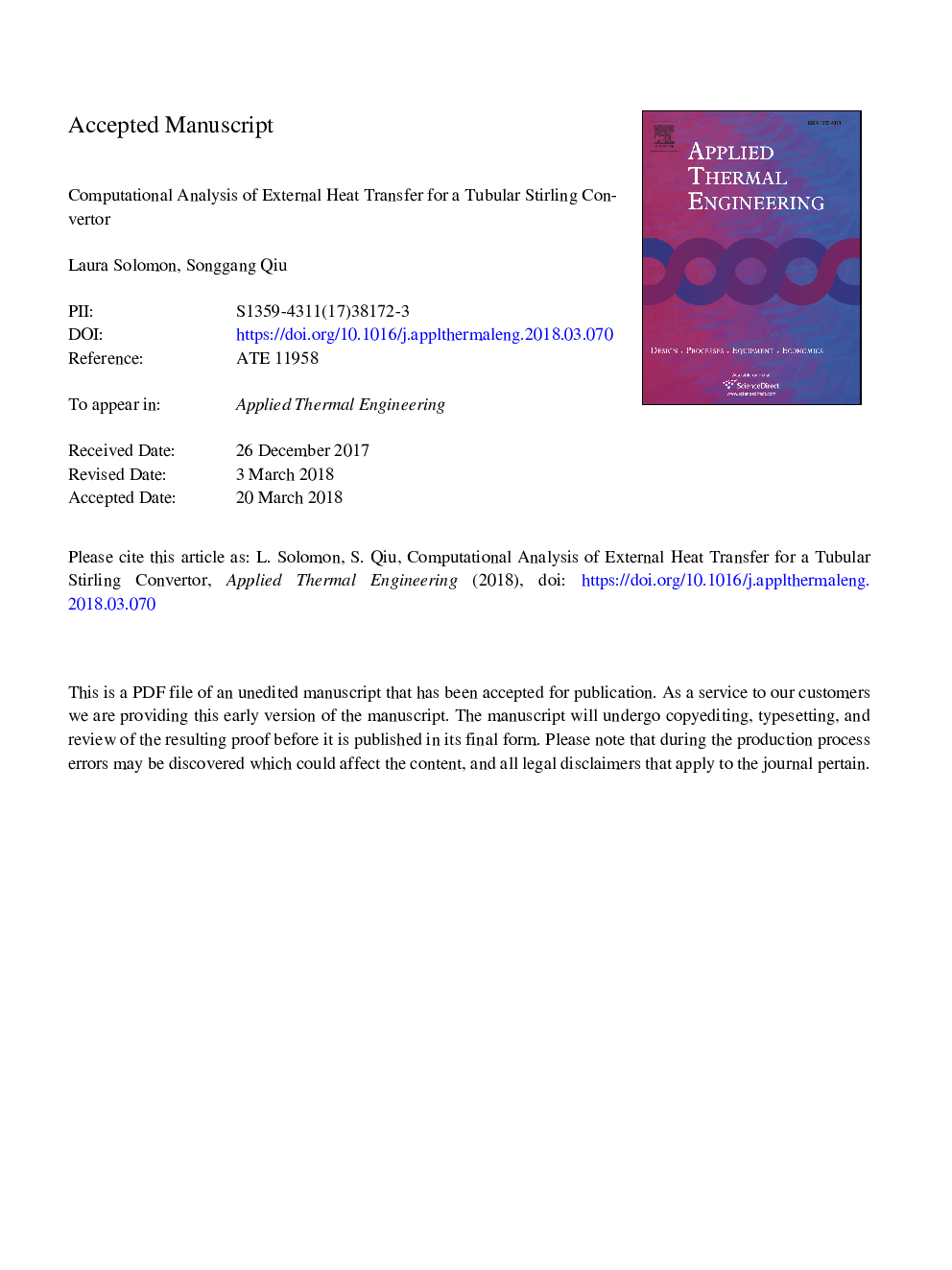| Article ID | Journal | Published Year | Pages | File Type |
|---|---|---|---|---|
| 7045389 | Applied Thermal Engineering | 2018 | 24 Pages |
Abstract
Stirling convertors are an ideal choice for use in numerous energy conversion applications owing to their simplistic design, fuel independence, and robustness. The use of additive manufacturing allows for significant improvements in the overall system efficiency by removing the design limitations of traditional manufacturing techniques. This allows for the design of a novel burner-heater head interface that can vastly improve the external heat transfer. A numerical analysis of the combustion flow over an additively manufactured tubular heater head was conducted. It was shown that the use of flow guides improves the velocity distribution of the combustion gases over the heat acceptor tubes. Additionally, the use of a diffuser plate can be employed to further improve the heat transfer. The developed model can be used further to optimize the overall design of the heat acceptor, regenerator, and heat rejecter.
Related Topics
Physical Sciences and Engineering
Chemical Engineering
Fluid Flow and Transfer Processes
Authors
Laura Solomon, Songgang Qiu,
